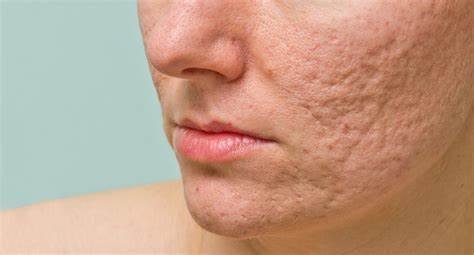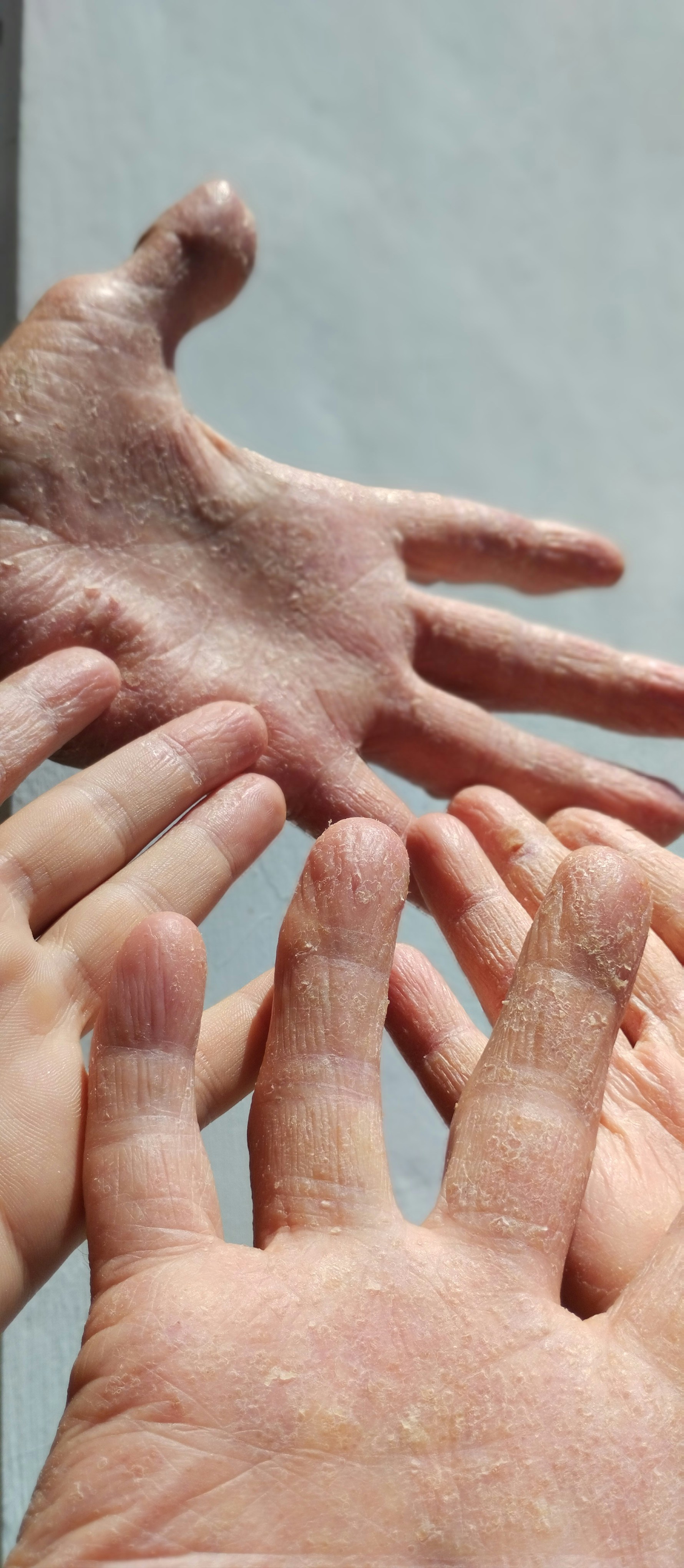Understanding Acne Scars: Causes, Challenges, and Treatment Options
How Acne Scars Occur
Acne scars form as a result of the body’s biological response to the inflammatory processes associated with acne. Acne begins with the clogging of hair follicles by oil and dead skin cells, leading to the development of pimples and in more severe cases, cysts. This blockage creates an ideal environment for bacteria, which can further exacerbate the inflammation. As the immune system responds to this infection, inflammation occurs, causing the surrounding skin tissue to become swollen and red.
During the healing phase following an acne outbreak, the body attempts to repair the damaged skin through the production of collagen, a vital protein that maintains skin structure and elasticity. However, if the acne is deep and severe, or if the individual picks or squeezes the pimples, the inflammation can penetrate deeper into the skin, disrupting normal collagen production. Depending on the extent of this disruption, different types of scars can form.
Atrophic scars, characterized by their sunken appearance, occur when insufficient collagen is produced during the healing process. These are often seen in individuals who have experienced severe cystic acne. Conversely, hypertrophic scars arise from excessive collagen production, resulting in raised scars that can be red and firm to the touch. Post-inflammatory hyperpigmentation is another common outcome, where the skin darkens in response to inflammation and does not necessarily involve a loss or excess of collagen but is mainly a change in pigment due to the inflammatory response.
In summary, the interplay of acne development, inflammation, and the subsequent healing process ultimately leads to the formation of various types of acne scars, significantly impacting an individual’s skin texture and appearance.
The Psychological and Physical Impact of Acne Scars
Acne scars manifest not only as physical reminders of past skin conditions but also as profound psychological challenges that can significantly impact an individual’s quality of life. Studies have revealed that individuals with visible acne scars often experience reduced self-esteem and negative self-image, leading to increased social anxiety and reluctance to engage in interpersonal interactions. The visible nature of these scars can lead to feelings of embarrassment or shame, compounding the emotional distress associated with them.
Furthermore, the mental health ramifications extend beyond superficial perceptions. Research shows that individuals suffering from prominent acne scars are at a higher risk of developing conditions such as anxiety and depression. The persistent visibility of scars can serve as daily reminders of past insecurities, perpetuating a cycle of negative thoughts and emotions. Such psychological challenges can deter individuals from participating in social situations, affecting relationships and career prospects.
Personal anecdotes from those living with acne scars underscore the emotional burden experienced. For instance, some report avoiding social gatherings due to fear of judgment, while others discuss the impact on their professional lives, such as hesitancy in job interviews. Statistics indicate that a significant percentage of individuals with acne scars seek professional help not solely for treatment options but also for emotional support and counseling. This highlights the necessity of addressing the psychological aspects alongside the physical ones when considering treatment solutions.
It is crucial for individuals affected by acne scars to acknowledge the comprehensive impact these scars can have on their lives. Integration of mental health support with dermatological care is essential in fostering overall well-being and promoting a more positive self-image. By recognizing the multifaceted challenges posed by acne scars, a more effective and compassionate approach towards treatment and support can be established.
Medical Treatments for Acne Scars
Managing and reducing the appearance of acne scars often requires tailored medical treatments, which can vary significantly based on individual skin types and scar severity. Topical treatments serve as a cornerstone in this realm. For instance, retinoids are popular and potent options that encourage skin renewal and enhance collagen production. These compounds, derived from vitamin A, can help minimize the visibility of acne scars over time. Patients using retinoids should be mindful of potential side effects, including skin irritation and increased sensitivity to sunlight. Thus, consistent use, alongside adequate sun protection, is vital for efficacy and safety.
Another effective topical option is silicone gel, which has been clinically proven to improve the texture and appearance of scars. By hydrating the scar tissue and promoting a balanced healing environment, silicone gel can noticeably reduce scar visibility over several weeks. Patients generally apply the gel twice daily, and while side effects are rare, minor local reactions may occur.
In addition to topical treatments, various procedural interventions can address acne scars more aggressively. Chemical peels involve applying a chemical solution to exfoliate the outer layer of skin, revealing smoother, more uniform skin beneath. This method can be particularly beneficial for treating superficial acne scars. Patients should consult a dermatologist to determine the appropriate type of chemical peel and the frequency of treatment, as deeper peels entail longer recovery times and increased risk of complications.
Microneedling, another increasingly popular procedure, utilizes a device equipped with fine needles to create micro-injuries in the skin. This process stimulates the body’s natural healing mechanisms and promotes collagen production, which can significantly reduce the appearance of scars. Microneedling is generally well-tolerated, but, as with any medical treatment, potential side effects, such as redness and swelling, should be anticipated.
Overall, the spectrum of medical treatments available for acne scars offers various effective options. Consultation with a qualified dermatologist will ensure individuals select the best strategies tailored to their specific needs. Understanding the benefits and potential drawbacks of each treatment is crucial in achieving optimal results.
Laser Treatments: Efficacy and Innovations
Laser treatments have emerged as a prominent option for addressing acne scars, offering various methods tailored to individual skin needs. Among these, two primary categories stand out: ablative and non-ablative lasers. Ablative lasers, such as Carbon Dioxide (CO2) and Erbium YAG lasers, work by removing the outer layer of damaged skin. This approach stimulates collagen production and encourages the growth of healthier skin. Conversely, non-ablative lasers, like Pulse Dye and Fraxel lasers, penetrate the skin without causing surface damage, helping to improve skin texture and reduce discoloration through deeper stimulation.
Both types of lasers come with their unique benefits and challenges. Ablative lasers typically provide more significant results in fewer treatment sessions; however, they may require longer recovery periods due to the degree of skin resurfacing involved. Non-ablative lasers, while often necessitating more sessions to achieve desired results, minimize downtime, making them attractive for individuals with busy lifestyles. Each treatment’s efficacy can vary widely based on the individual’s skin type, scar severity, and adherence to post-treatment care recommendations.
Recent technological advancements have further enhanced the precision and effectiveness of laser therapies. Developments in fractional laser technology, for instance, allow for targeted treatment of specific areas while preserving surrounding tissues. Additionally, the introduction of combination therapies, merging laser treatments with other modalities such as microdermabrasion or chemical peels, has shown promising results for many patients.
Cost is another consideration when exploring laser treatments for acne scars. Prices can vary significantly based on geographic location, the type of laser used, and the required number of sessions. On average, treatments can range from a few hundred to several thousand dollars, highlighting the importance of thorough consultations and personalized treatment plans with dermatologists. For patients contemplating laser therapy as an option for acne scars, understanding the nuances of different technologies can lead to more informed decisions and improved outcomes.




Leave a Reply
Want to join the discussion?Feel free to contribute!